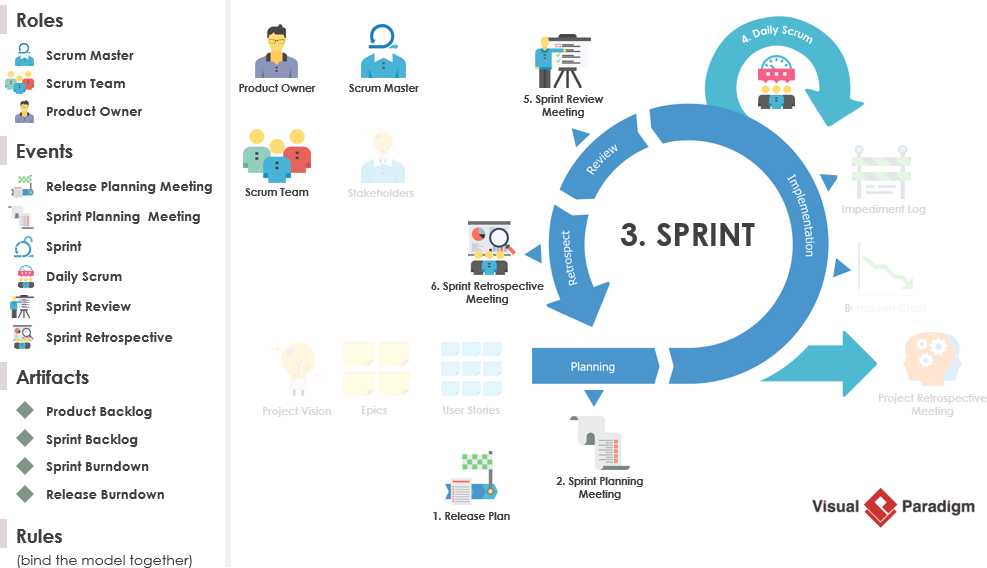Mục tiêu chính của Quy tắc Scrum là tối ưu hóa quy trình phát triển và giảm thiểu thời gian lãng phí.
Dưới đây là danh sách các quy tắc cơ bản của Scrum:
- Nhóm Phát triển được đề xuất có từ 3 đến 9 thành viên
- Nhóm Phát triển là Đa chức năng và tự tổ chức
- Mỗi Sprint có thời gian là bốn tuần hoặc ít hơn
- Không có thời gian nghỉ giữa Sprints
- Mỗi Sprint có thời gian cố định
- Thời gian cố định cho tất cả các sự kiện Scrum
- Chủ sản phẩm là một người, không phải một ủy ban.
- Khi một Sprint bắt đầu, thời gian của nó là cố định — đừng kéo dài thời gian sprint hoặc cắt ngắn thời gian sprint
- Mục đích của mỗi Sprint là “Có thể giao hàng” Phần mềm
- Mỗi Sprint bao gồm Lập kế hoạch Sprint
- Lập kế hoạch Sprint Cuộc họp là Thời gian cố định trong 2 giờ / tuần của độ dài Sprint
- Scrum hàng ngày diễn ra hàng ngày vào cùng một thời điểm trong ngày
- Scrum hàng ngày được giới hạn thời gian là 15 phút
- Mỗi Sprint bao gồm Đánh giá Sprint để nhận phản hồi từ các bên liên quan về sản phẩm
- Mỗi Sprint bao gồm Họp tổng kết Sprint để nhóm kiểm tra và điều chỉnh
- Đánh giá và Nhìn lại các cuộc họp là được giới hạn thời gian tổng cộng là 2 giờ / tuần của độ dài Sprint
- Không có thời gian nghỉ giữa Đánh giá Sprint và Nhìn lại các cuộc họp
- Các Danh sách sản phẩm là nguồn duy nhất của các yêu cầu
- Mục đích của mỗi Sprint là sản phẩm có thể giao hàng
- Một Sprint mới bắt đầu ngay sau khi kết thúc Sprint trước đó.
Các khung Scrum bao gồm Các đội Scrum và các vai trò, sự kiệntài liệu, và quy tắc. Mỗi thành phần trong khung này phục vụ một mục đích cụ thể và là điều cần thiết cho sự thành công và sử dụng Scrum. Các quy tắc của Scrum liên kết các vai trò, sự kiện và tài liệu, quản lý mối quan hệ và tương tác giữa chúng như được thể hiện trong hình dưới đây:

This post is also available in Deutsch, English, Español, فارسی, Français, Bahasa Indonesia, 日本語, Polski, Portuguese, Ру́сский, 简体中文 and 繁體中文.













